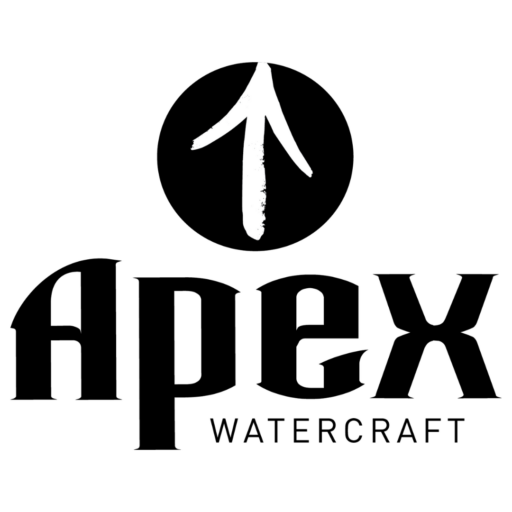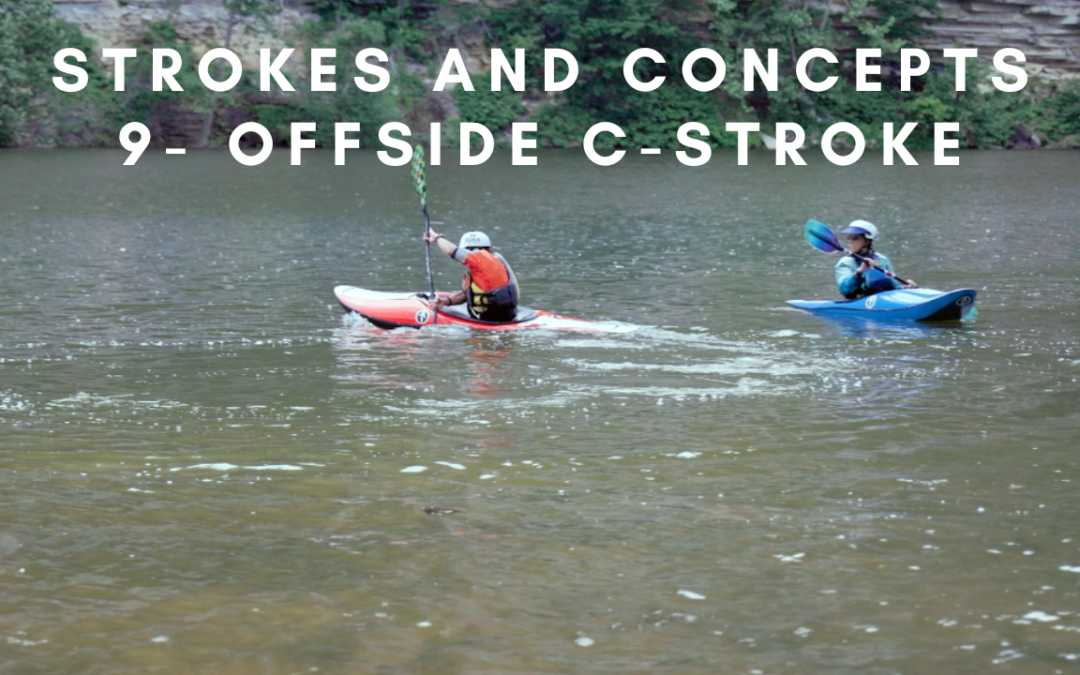Offside C-Stroke – Mastering Advanced Paddle Techniques

The Offside C-Stroke might initially appear as a “trick stroke” to many, but learning it can provide significant advantages for kayakers. While not usually essential for basic river kayaking, mastering this stroke offers major benefits. It serves as an excellent exercise for enhancing paddle dexterity, improving blade control, and feathering proficiency. Additionally, it develops essential spin-momentum skills, allowing you to leverage spin-momentum to your advantage rather than considering it a hindrance. Moreover, the Offside C-Stroke enables you to continue paddling with a single blade if one were to break a paddle on the river. And, of course, it’s a cool stroke to impress your friends with!
Drill: Perform one large circle and one small circle in each direction. Carrying your forward speed.
Executing the Stroke: The Offside C-Stroke is unique as it involves paddling with the blade on the opposite side of the boat. You’ll use your right blade on the left side of the boat, executing C-Strokes in this manner. The stroke also includes feathering back into position instead of removing the paddle from the water.
Head: Lead your turn with your head by looking in the direction you want to paddle the kayak.
Boat: Keep your boat flat to maintain stability and control.
Body: Ensure your weight is centered over the boat, and let your body lead the turn.
Paddle: Since this stroke focuses on spin-momentum, start by building forward speed. Initiate a spin to the right. Next, place your left paddle on the right side of the boat and pull yourself forward using an offside forward stroke. Quickly turn the paddle, orienting the power face towards the boat, and feather it forward and away from the kayak. Pull the paddle back towards the boat and transition it back into a forward stroke, repeating the process. Maintain a grip with the top hand over the bottom hand for maximum power and effectiveness.
Common Mistakes:
- Placing the paddle on the outside of the turn instead of the inside. This mistake results in the boat spinning in a circle without any forward progress.
- Struggling with feathering forward and losing speed due to an improper feather angle. Practice feathering back and forth to find the right feeling and avoid hitting the boat.
- Failing to punch forward with the top hand adequately, resulting in a weak stroke. Ensure your top hand is positioned forward enough, creating a vertical paddle for stronger and faster strokes.
- Not attaining sufficient speed initially or waiting too long to start pulling forward. This error causes the boat to spin out and stop.
- Neglecting to lead with your body. Leading with your body will help you comfortably utilize the offside paddle and maintain the turn.
Drills:
Level 1: Perform one large circle and one small circle in both directions. Focus on maintaining forward speed during the large circles and concentrate on executing a strong bow draw during the small circles.
Level 2: Paddle the boat using only offside C-Strokes, switching sides when you’re ready to change directions. Utilize an offside sweep stroke to modify spin momentum. Emphasize kayak speed during larger turns and practice transitioning from tight turns to faster, larger turns while maintaining spin momentum.
Level 3: Cross an eddy line using the offside C-Stroke, then continue turning the boat downstream and back into the eddy, crossing the eddy line for an eddy out without removing the paddle from the water. Paddle up the eddy again and exit from the top, staying on the inside of the turn and exclusively employing the Offside C-Stroke.
By following these step-by-step instructions and progressing through the various levels of mastery, you’ll develop advanced paddle techniques and gain confidence in executing the Offside C-Stroke. Enjoy exploring the benefits and challenges this stroke offers to enhance your kayaking skills!

